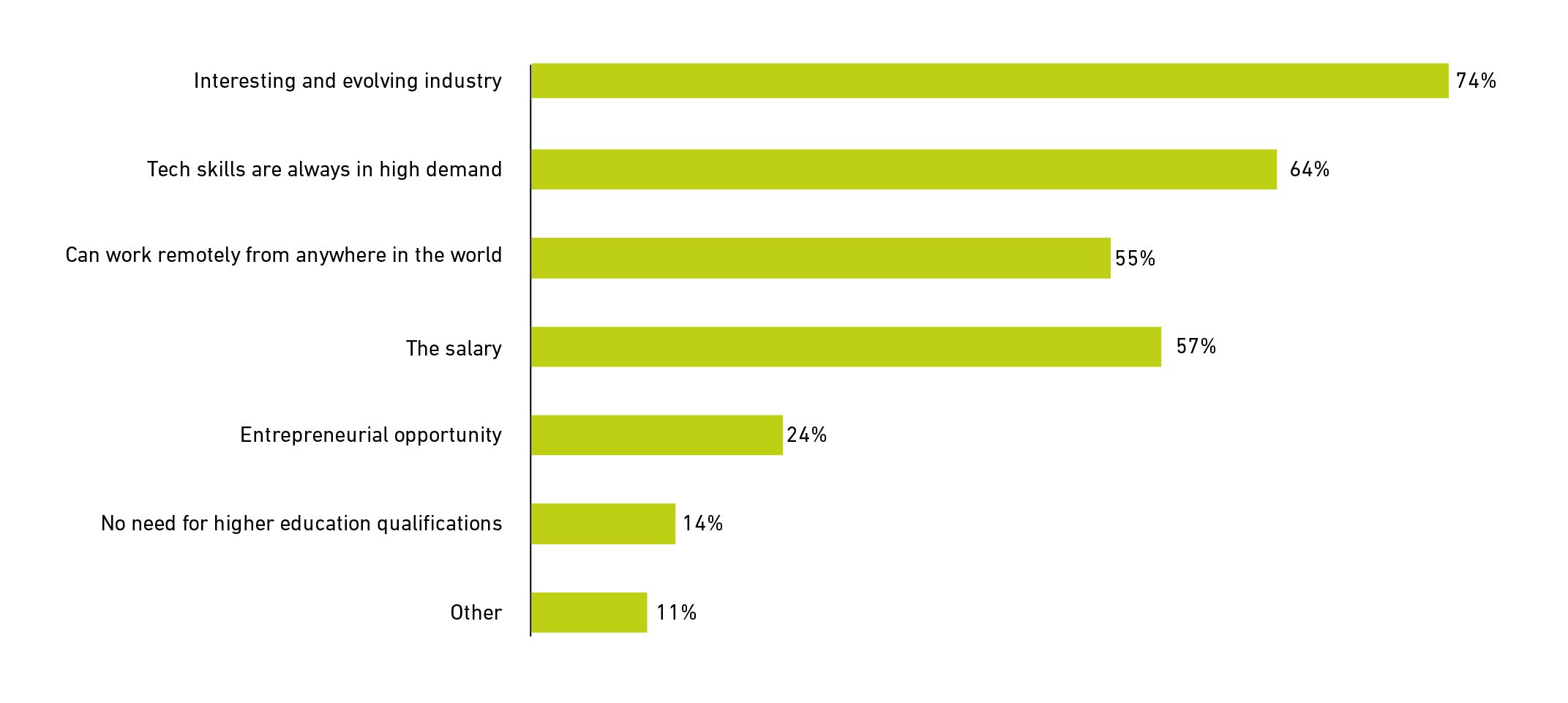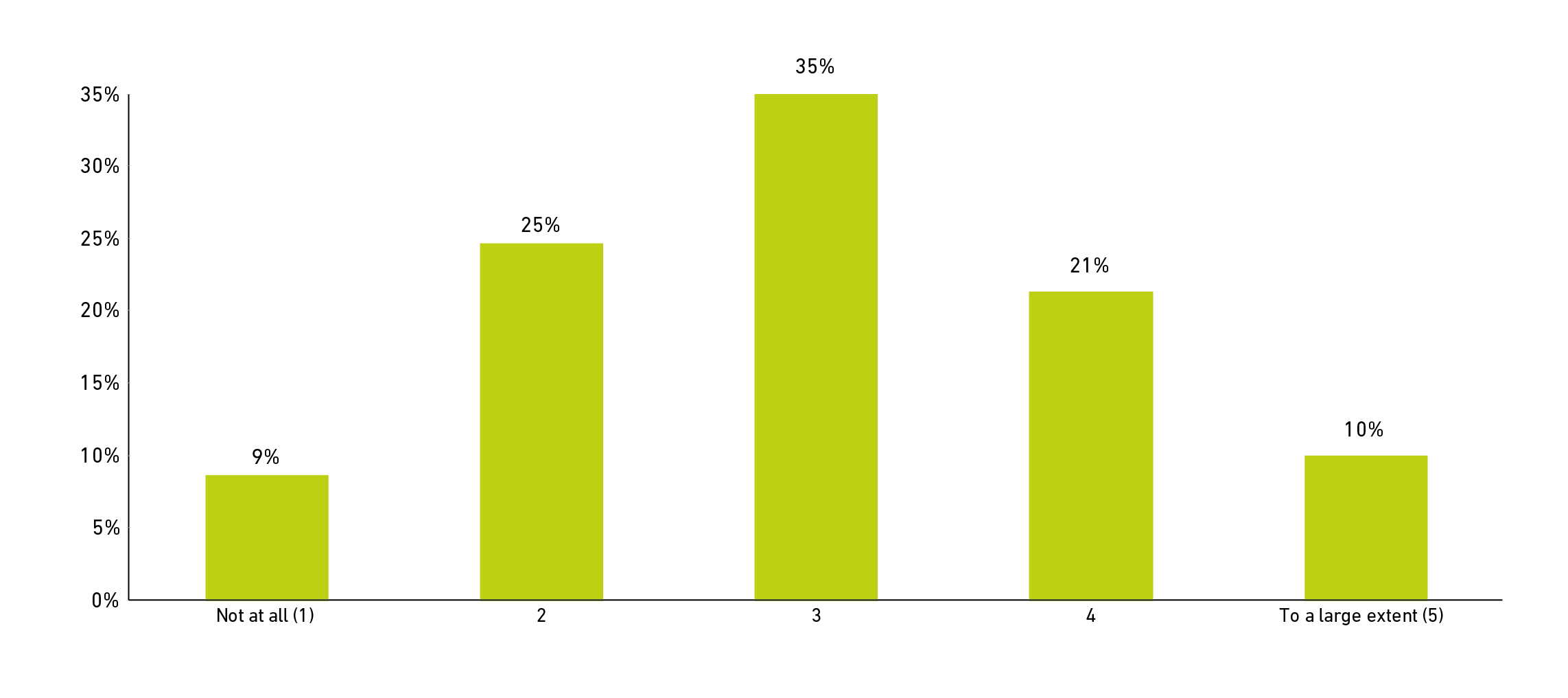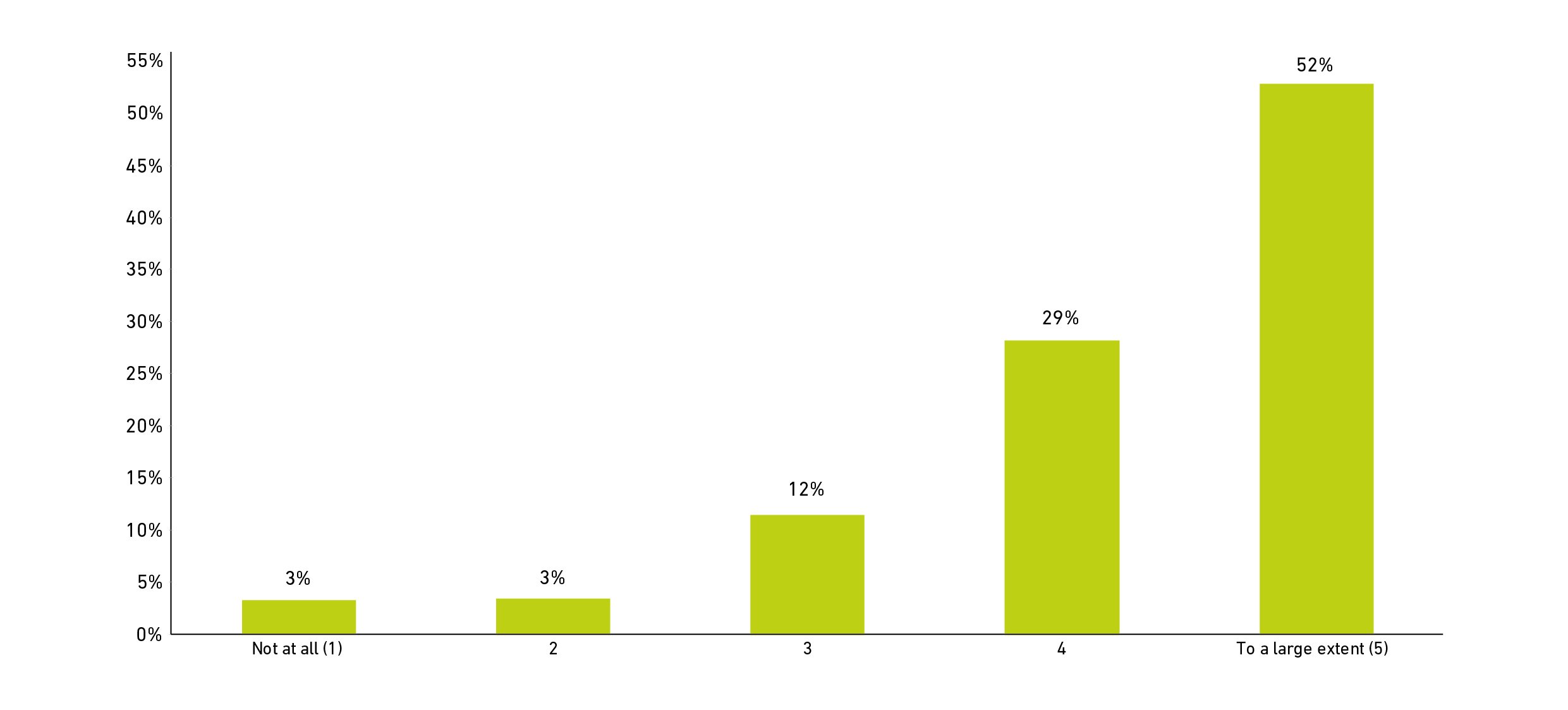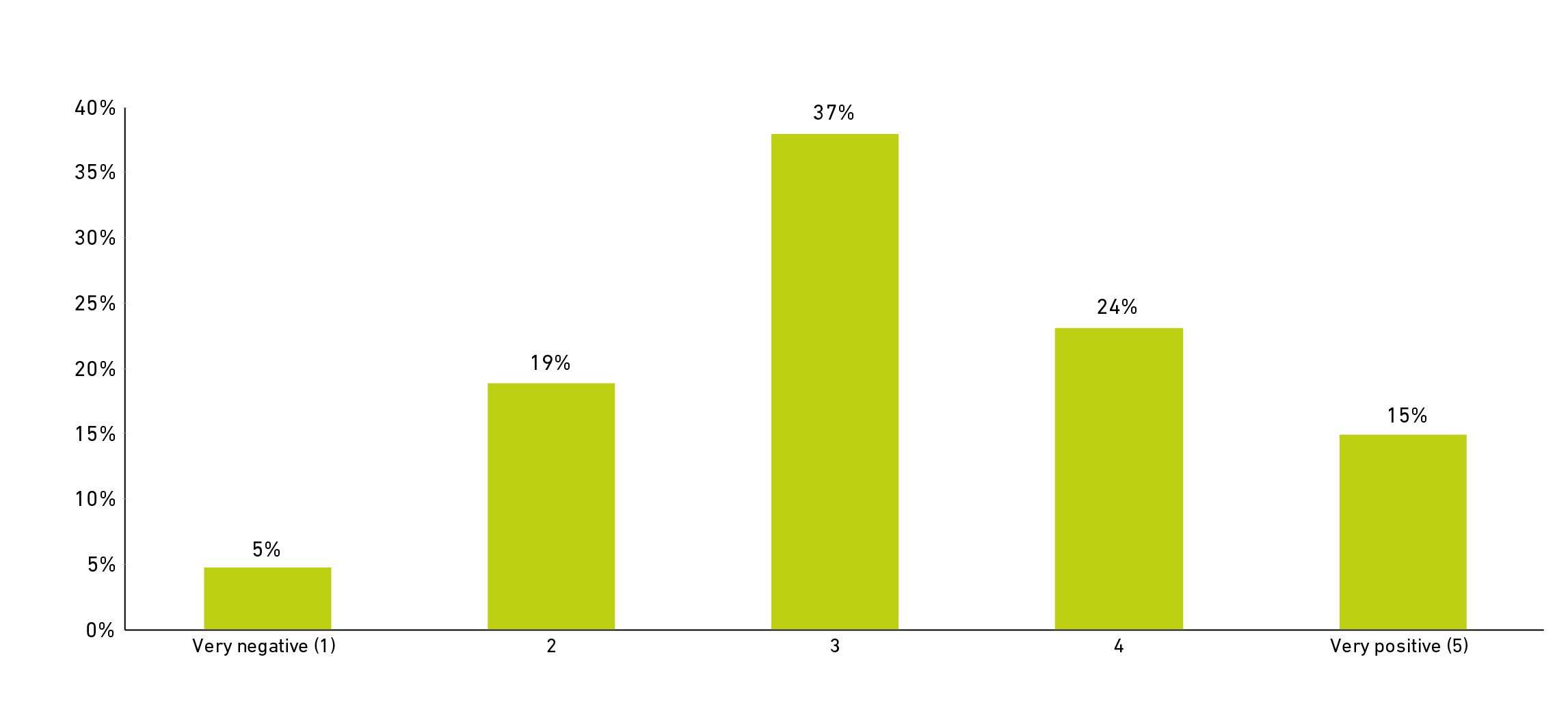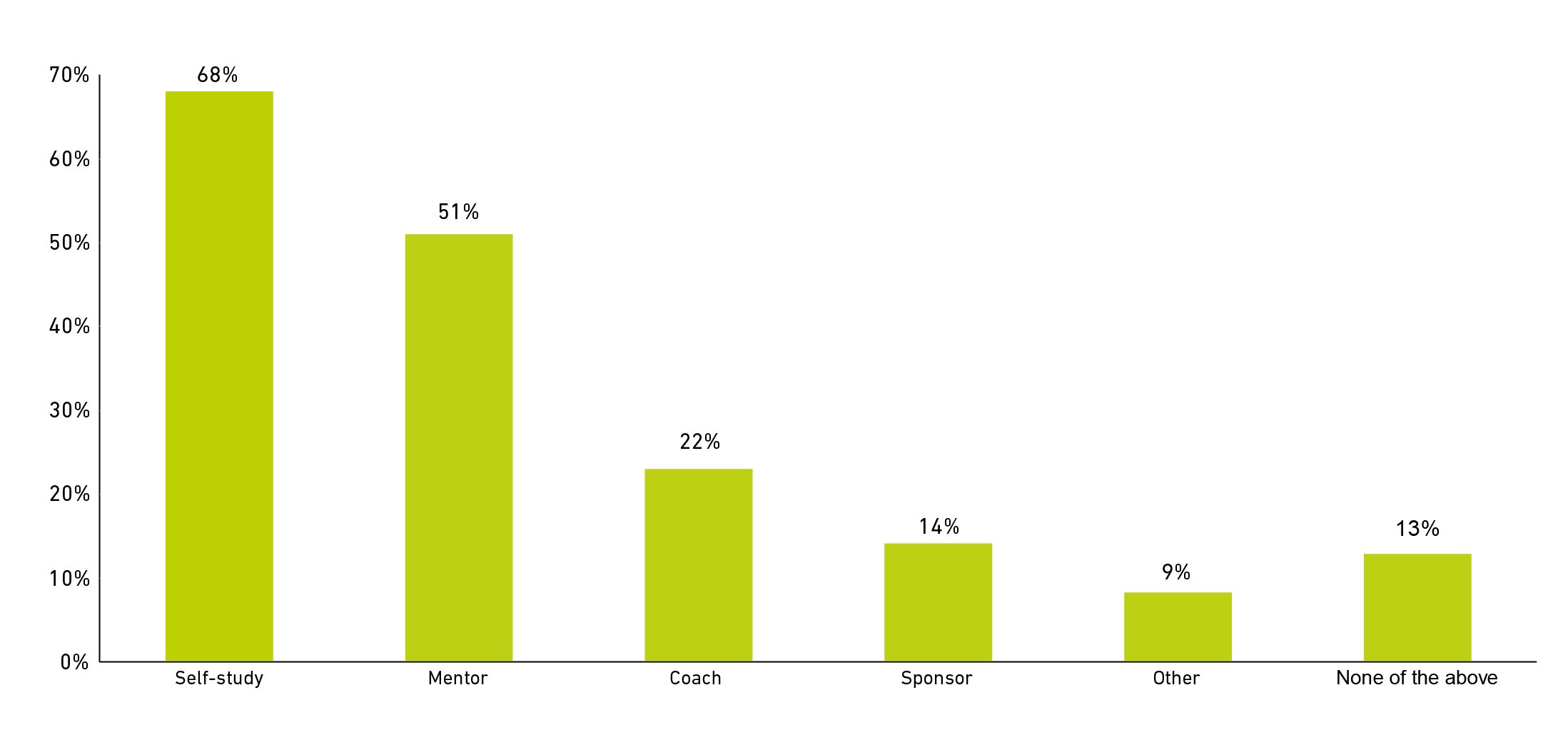A qualitative view: The CBF/ BCS survey
Introduction
The idea behind this survey was to find out whether the intersection of being a women and black presented additional barriers to entering the IT industry. Whilst the number of responders is not large, both CBF and BCS think these answers indicate trends that can be addressed. The fact that it took so long to get sufficient views to draw any conclusions at all demonstrates the paucity of representation in IT for black women.
Alongside the raw data though we also asked for verbatims – and here we get a real sense of some the struggles faced by black women in IT. Some of these are referenced throughout the report – as well as some personal interviews to fill out the experiential angle.
The number identifying as a woman or gender minority from an ethnic minority background was 360.
The following sections do not cover the full report, which is available on demand, but highlights key areas.
Attraction to IT industry
The answers to the question ‘what attracted you to the IT industry’ drew answers that we would also expect from most people who enter the area.
The verbatims here ranged from comments on drawing from ‘creativity and mathematical thinking’ in the work to the ‘large range of possible future careers’.
Of particular interest to BCS were the ideas of making and supporting social change and impact. And naturally some motivations were more prosaic. One commenter wrote: ‘An opportunity presented itself in the company I worked for so I took it because I fancied a change.’
Figure 14: What attracted you to the tech industry?
Click to expand image
Perception of promotion opportunities and barriers
‘To what extent do you believe promotions in your organisation are based on individual performance?’ is a key question when discussing issues of diversity. And there were a raft of answers with a very common theme – the requirement on minorities to over-perform to prove themselves.
Below are the raw numbers:
Figure 15
Mean average = 3.16
Click to expand image
Here is a short selection of the verbatims:
These themes are also present in previous research on the experience of women in the industry. So the next question ‘do you believe black women face more or less barriers to entry into the tech industry than women from other ethnicities?’ digs into an important area. And raised several interesting further thoughts in the comments.
Figure 16
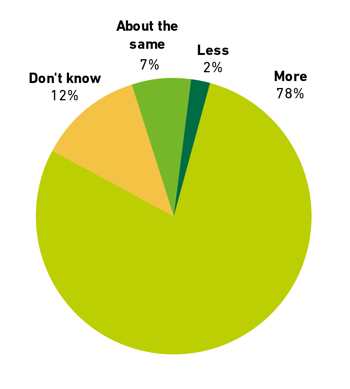
Perceptions play a role in several ways, as exemplified by these two verbatims:
‘Women from other ethnicities, especially white women will be hired on potential and black women are hired on skills.’
Whilst as rule BCS would view hiring on skills as a positive approach – this comments raises an interesting corollary to that rule – for example, how much accountability is taken into consideration in interviews for transferable skilling.
Another issue that we allude to in the interviews section of this report is micro-aggressions. ‘There are specific micro- aggressions that many black women face due to the intersection of blackness and womanhood,’ said one responder.
Another responder gave an interesting view on the effect of diversity targets: ‘With diversity hires, it's quite easy to get a role or interview, as a companies want to be seen as being progressive and diverse. However, they don't act on it once you have secured the role which jeopardises the development as in your career, making it difficult to move on in your career.’
One responder was even more direct with this – talking about the ‘pet to threat’ attitude when a diversity hire is effective.
Another issue highlighted is the ‘seeing people like me’ conundrum. As one commenter wrote: ‘a lack of exposure to role models working in tech is a massive barrier.’
Interestingly two comments are very clearly from the cohort who were not identifying as a women or person from an ethic minority, but nevertheless give food for thought:
‘I’ve only worked with one black lady in my years in IT.’
BCS recorded a podcast with author Suzanne Doyle-Morris (Search: The Gem of all Mechanisms), in which she spoke of the demeaning terms that are used when a women shows forcefulness that would be unacknowledged as such if coming from a man. This idea came up in this context too, as exemplified by this comment:
‘The most damaging term to a woman's career is “angry”. As a black woman I have been called this by both genders for asking focused questions.’
Inhibitors in applying for IT roles
When asked the question of what may inhibit a responder from applying for roles in IT, we naturally get answers that apply to a broad swathe of people. But again, there are specifics in the audience context worthy of further consideration. And some previous threads from previous questions are drawn in too, for example by our first two quotes:
As is to be expected recruitment practices come up:
‘Unconscious bias. Diversity and inclusion statements are usually “standard” items and really tell you nothing. How strategies are implemented is what is important and whether they take an equal opportunity or equality view (these are very different things) and if they sign up for positive action. Do all staff have tailored / in-person unconscious bias training (not an online activity)? How are processes in the organisation reviewed for audit of bias / equality?’
‘What can be off-putting is the way roles and adverts are written with requirements or potential requirements raising barriers or issues if you have caring responsibilities. I can’t provide significant weekend or out of hours cover; some tech roles also require a significant office presence which again makes the caring balance / management challenging, so I’m better off looking at roles where it isn’t a requirement. Conversely many organisations can put the requirements in (ours does) but it happens so infrequently for staff at all levels I feel we’re putting people off as the reality is we are far more flexible and accommodating of everyone’s caring requirements or personal needs.’
‘Expectation of formal qualifications over experience and interest in the role.’
‘No part-time or flexible options.’
As BCS is pushing forward on its ‘making IT good for society’ agenda, some of the inhibitors actually make for encouraging reading:
‘The type of organisation the role is for. I tend to apply for roles in companies with a purpose (i.e. pharma, non-profit, healthcare).’
‘I avoid organisations that may have socially damaging outcomes, such as contributing to military and financial institutions.’
Broader thoughts on culture arise too:
‘The wording is often too A-type, aggressive. Very few companies are transparent about their salaries. I am also a carer for older family member so this is an important factor - many tech roles expect you to be on all the time.’
‘The “tech bro” culture. It is exhausting being around (even virtually) Type A / extroverted white boys (yeah, I said it) who failed up.’
Other commenters noted that the pandemic has had disproportionate impact to ethnic minority groups. ‘The situation of representation of black females in the tech industry was always an issue but it has been really compounded with the pandemic because black females are the main carers in families,’ writes one responder. ‘I have had four members of my family who had COVID or a suffering from other serious life threatening illnesses. Employers need to give more opportunities consider part time and working from home roles.’
Imposter syndrome also raises its head… ‘I don’t apply for roles if I don’t meet at least 60% of the job requirements.’
A final thought is on the possibility of being patronised, one commenter laments an organisation’s ‘over-promotion of diversity and inclusion, it puts me off a job as I feel that I am then discredited for hard work and undervalued.
Role of diversity and inclusion statements
Figure 17: Do you consider an organisation's diversity and inclusion statement or policy when applying for a job?
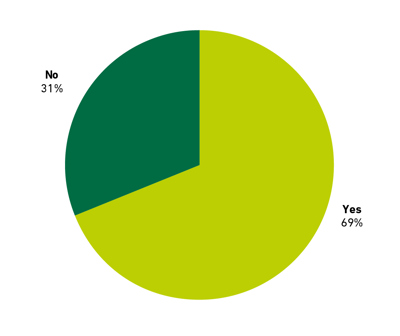
A clear conclusion can be drawn from this simple chart, with its underpinning split. Diversity and inclusion are important and valued. In keeping with the rest of this survey, they need to reflect actual changes in organisations – in attitude and optics.
And the next chart shows that these policies matter:
Figure 18: To what extent does diversity and inclusion matter to you in your job role?
Click to expand image
How to improve commitment to D and I policies
The final policy chart shows a matter that demands further investigation: whilst it is encouraging that 39% are seeing a positive impact from diversity and inclusion policies, 37% are ambivalent and 24% consider them to be negative.
Figure 19
Click to expand image
As reports only really work if there is a practical dimension, we then asked in the survey what one change responders would like to see in their organisation’s commitment to diversity and inclusion. Below we draw together key comments under general themes.
One particular comment is useful to introduce this, as it draws together a number of strands at issue, and nicely demonstrates some of the complexity: ‘Although they have an organisation for people of colour and have recently started showing people of colour on their advertisements, it doesn’t escape the fact that there aren’t any people of colour, particularly black people, who get promoted into management nor given the opportunity for any sort of progression. Also, they still have not scrapped the policy of minimum 3% of ethnic minorities to be employed in the company. This needs to happen because once hiring managers have reached that target of 3%, they don’t employ any more minorities.’
It is also interesting to note that the idea of closing the gap between being performative and actually making a difference is a common underlying principle here.
Look beyond the obvious
Diversity issues have crept up the agenda over recent years, but more thought is required. Said one commenter: ‘Understand that having a higher amount of women in the company doesn’t “tick all the boxes”.’ And another drew attention to the fact that organisations need to ‘commit to all protected characteristics not just the popular ones.’
The importance of nuanced approaches – and ‘doing the work’ - are also hinted at in a number of comments, for example, one person writes: ‘The language used when talking about the groups that they are intending to support often doesn’t feel empathetic or like they’ve understood the issues that certain groups are facing.’
Recruitment practices
Diversity issues have crept up the agenda over recent Gender and name blind recruitment was a theme in the recruitment area. One commenter mentioned anonymised blind CVs should be followed by online interviews without video. They also mentioned an idea that previous BCS surveys have received - to look at how orchestras conduct screened auditions.
In a straightforward comment, one person made this request: ‘I wish I could see more people of colour in higher positions.’
The issue of transparency was also mentioned – with the observation from one responder that ‘it’s frustrating when they pick the “token” person from any minority and feature them heavily on advertising platforms.’
Another responder proposed that diversity and inclusion sessions need to be mandatory and discussed broadly, and that fits with this practical tip in another comment: ‘One change would be to improve the onboarding process by exposing people to spaces where they can access support from day one, e.g. women’s network information should be included in the onboarding information, alongside LGBT, neurodiversity, mental health forums.’
Culture and working conditions
So much of this is about organisational culture. What is needed? Here are some verbatim suggestions:
- More flexible working practices, e.g. job share, school hours working, even school holiday extended leave. Interactions with minority representatives through seminars.
- Make managers accountable for diversity and inclusion and tie it to reward.
- Diversity and inclusion needs actual resource and correct financing, so it not just word or a pretty picture or a video.
- Pace: there are plenty of good ideas but the pace of change is too slow. This is caused by changes being made by enthusiasts and as side-projects, rather than through major change initiatives. We’re getting there but very, very slowly.
- We need to be more transparent and instructive about the KPIs on success in diversity and inclusion.
- Formulate what good looks like and what builds that picture.
- I would involve the whole workforce – and include openness to hear from black workers. Ask them directly what they think can be improved and how.
- A high ranking individual should have responsibility for increasing diversity and inclusion through implementation of a equality and positive action. This person would then a) have to be audited and b) take action.
The societal dimension
Understandably the broader issues facing society crop up in many comments. Here is a selection:
- We need to stop dancing around issues that are deemed ‘too political’. Historically we’ve had a stance of not presenting a political opinion as an organisation, but in areas like sustainability, our stances are inevitably political and the leadership seem happy with that. But when it comes to diversity and inclusion, we hold off on public statements of our stance for fear that they’ll be seen politically.
- Lose the ‘woke’ connection. Diversity of viewpoint is important for problem solving. Inclusivity is important to get diverse viewpoints.
- Stop treating diversity it like it’s a charity project.
- We need more action in the local community to tackle disparity in applicants from diverse backgrounds e.g. events in local schools, work experience and so on.
- There should be more formal training delivered by black women for senior leaders and managers on the unique experiences of black women and how they differ from other marginalised groups.
HR practice
Some of these issues sit with the HR function, and several commenters made suggestions along these lines:
- We need progress on gender pay gap.
- Make sure people with less experience are getting mentored and levelled up.
- Outreach and education support is needed to raise awareness of opportunities among black women and girls.
- We need more mentorship programmes.
- Embed pay equity so that we are not disadvantaged - I would also like to feel more empowered to keep on learning and developing
my career e.g. 121s that are not just updates. - There is a lack of trust. Ketanji’s experience rings – (a reference to Ketanji Brown Jackson first black Supreme Court justice in the US).
- Just hiring diverse people is not enough. The company must also provide a safe environment to those diverse employees and listen to those diverse employees when they bring up micro-aggressions – then the company should act on it and not just brush it off as a minor incident.
- Our apprenticeship program was for people who have no prior experience. It feels like the program was performative.
- We need more sponsorship opportunities and pathways for black women who are junior engineers which helps them accelerate from junior positions to more senior positions.
- Greater consideration of intersectional identities is required. Organisational initiatives are often highly siloed around a single protected characteristic, and don’t consider when a slightly broader amendment / application of policy could benefit more minority groups.
Further career support
The career support answer allowed for more than one option to be selected. The question posed was ‘have you had support in your career from any of the following?’
Figure 20
Click to expand image
Self-motivation is clearly the top requirement, but in an area we have shown to be problematic, improvement in coaching and sponsoring is called for. And whilst 13% seems, at first glance, low for ‘none’ that is still a substantial minority.
In the comments we had a number calling attention to the work of Coding Black Females and similar groups. One commenter said: ‘Due to organisations such as black girls in tech, coding black females and code first girls I was able to have a relatively clear path onto the tech industry. If these companies did not exist I think I would’ve found it harder to find learning resources, networking, training and job opportunities.’








